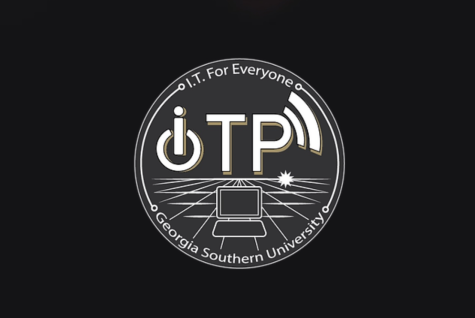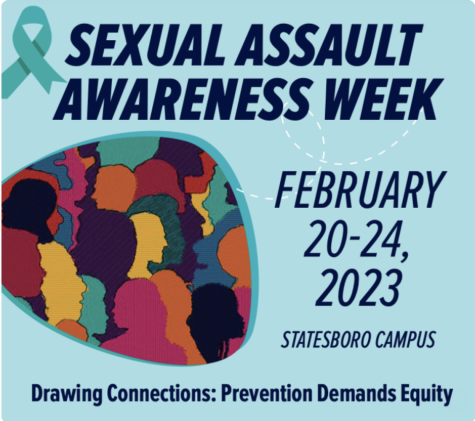Exceeding Expectations: Here’s How To Ace Your Classes
November 5, 2019
College is a completely different animal from high school. Some may have managed to breeze through high school with little to no studying.
But in college? Yeah, we pull all-nighters and weekend-long cram sessions to obtain even a coveted C.
Both of those take a toll. So, I talked to Dr. Michael Nielsen, department chair and professor of Psychology at Georgia Southern, about how to get the most out of your studying.
How to Study Better
Keep up with your work.
“Postponing studying is a sure sign to not do as well as you would otherwise, ” said Nielsen.
He suggested that students not only keep up with the assigned readings, but also read everyday for every class, even if only for a half hour.
Use your textbook’s built-in outline.
In your textbook, there should an outline built into how the book is organized into chapters or sections.
“The headings that are presented are typically larger or smaller to indicate how large a topic is or how much of a core concept it is in that material,” Nielsen said. “So before you even begin the chapter, look at those headings. Only look at the headings. That gives you a chance to see what the outline of the material is.”
Nielsen compared learning to drawing a tree.
“Probably you’re going to draw the branches first and then add the leaves later,” said Nielsen. “And the headings are like branches. Some are very large, and some are smaller that branch off of those larger topics. You are better able to learn the material when you go through the second time and actually start reading it.
Engage with what you are learning.
When you are reading your book, it’s helpful to pause at least every page and make notes, according to Nielsen.
Nielsen said, “Ask yourself, ‘how would I summarize this? How can I relate this to something else in my life or something I’ve experienced or observed?’ Doing that, it gives you a chance to consolidate the information and to reframe it in a way that builds connections between ideas, so that you better remember it later on.”
Nielsen added that he doesn’t mean to ask yourself these questions silently.
“Go ahead and talk to yourself,” he said.
Take notes the old-fashioned way.
Nielsen said studies show that taking notes by hand is more likely to help you remember the information later on.
Use more than one approach or style.
Nielsen said that, while it’s not his area of specialty, the idea of learning styles, such as students being more of an auditory or visual learner, is not supported by recent research.
Nielsen brings up a hypothetical situation of a student having had class with a more hands-on approach where students engage in projects and learn by doing.
“Part of the reason why that’s effective is because it is using all these senses,” said Nielsen. “It’s using more than one approach. It’s not just a worksheet. It’s not just a textbook.”
Group Projects
“Group projects are the bane for some people,” said Nielsen. “We’ve all been in groups where we worked hard and the other people didn’t, and that’s just very frustrating.”
He said this can also be reflective of other areas of life beyond school, such as the job world.
“It helps if you have clear guidelines in a group project,” said Nielsen. “Dividing up the responsibility and having periodic check-ins, so that if you and I are on a project together, we regularly get in touch with each other and say well, here’s what I’ve got on this, and I’m having a little trouble with such and such. That helps because it’s a chance for us to build rapport, it’s a chance for confirming that we’re both on task and it also helps avoid surprises.”
How to Approach Your Professor
Nielsen said that if you’re not having the success you need after the first exam, then you really do need to stop by the professor’s office and see what help you can get.
“It can help to make an appointment beforehand by email because that can help the faculty member coordinate things, so there’s not a conflict that comes up that can be avoided, like more than one student at a time,” said Nielsen.
Nielsen advised students to use a formal introduction in the email.
Here’s a basic example he provided: “Dear Professor Jones, I’m in your ten o’clock MWF class, and I’m having trouble with the material. I’ve tried studying, but I’m not seeing the success I’d like. May I come during your next office hours?”
“Doing that should be responded to favorably by everyone,” said Nielsen. “Addressing the person with respect, that goes a long way.”
He also said it’s helpful to understand that the professor really is there to help you learn.
“I look forward to when students come,” Nielsen said. “We can look at exam questions together and see sometimes that there’s an area of the chapter that caused problems for the students. Other times, it’s a kind of question. Looking together, you and I, at the material really can help us figure out what’s going well and what’s not, so I really encourage people to do that.”














